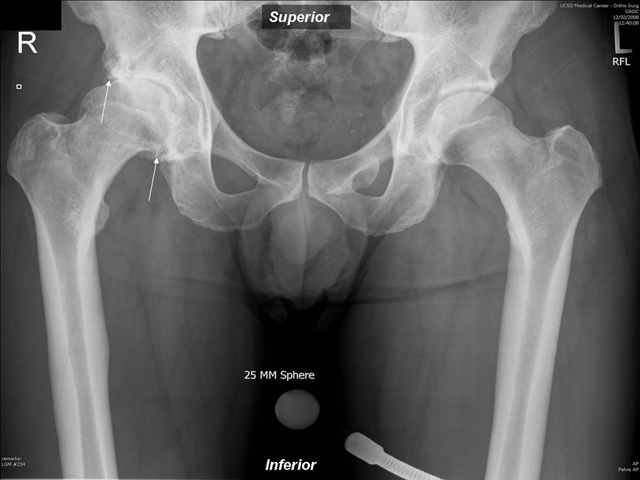Summary
Findings
Note the narrowed joint space, degeneration of the articular surface of the femoral head causing flattening, and osteophyte formation (see arrows).
Impression
Degenerative Joint Disease, right hip joint
Clinical Pathologic Correlation
Degenerative Joint Disease (DJD) affects approximately 70-90% of Americans >75 years old. It tends to affect weight-bearing joints such as the hips, knees, and lower lumbar or cervical vertebrae. Men and women are affected equally however symptoms occur earlier and appear more severe in women. Patients typically complain of deep, aching pain of insidious onset that worsens throughout the day. This differs from inflammatory conditions, which improve over the course of a day. Additional symptoms include stiffness and swelling. On physical exam, pain is often elicited when testing hip range of motion, especially internal and external rotation. Diagnosis is largely clinical since radiographic findings don’t necessarily correlate with symptoms. Treatment recommendations include pharmacotherapy, exercise (bike, pool), weight loss, physical therapy, and possibly joint injection for pain. Many patients will eventually seek surgical treatment with joint replacement.
View
Radiograph
Specimen
Hip joints
Image Credit
Douglas Chang, M.D., Ph.D.Department of Orthopedic Surgery
School of Medicine
University of California, San Diego

